Summer Salad or Tomato-Gate
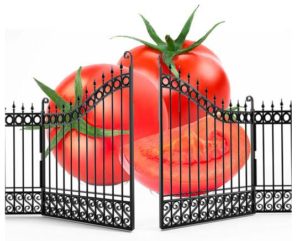
Three years ago I said the word “tomatoes” and all hell broke loose. Now, it gets dusted off every year for another look to see if anything has changed.

The background.
There is an annual convention in Nashville known as the “Country Radio Seminar.”
It’s an annual pilgrimage for America’s country radio stations to where the music is made. Back in the 70s, Tom McEntee and some others thought it be a good idea to get radio and records together. I’m not sure what his original idea was, but good things were to come out of it.
I’m not sure who first said “Growth Through Sharing”, but my hunch is Ed Salamon.

The concept was, we would meet in Nashville and share what we were doing back at our stations. At the time, there was typically only one country radio station in each market. So if we met up, we could share our research, experiences, promotions, methods and systems, and learn from each other. Further, we felt we could connect with the labels and the artists. That way, we would be stronger than pop, rock and other genres. With “Growth Through Sharing”, we’d make country stronger in ways the other formats wouldn’t be able to replicate.
About 1989/1990, the sharing took a back seat. I know. I was on panels in the early 90s. I’d look out from the stage and see folks from stations I competed with. We couldn’t share in the same way we did before we doubled up in so many markets. Garth Brooks, along with Brooks & Dunn, Alan Jackson and the newer sound from Nashville had made country less twangy and more mainstream. At the same time, CHR had a problem. To Rap or Not to Rap was the question.
Country Radio Seminar continued, but it was a little less “sharing” than intended.
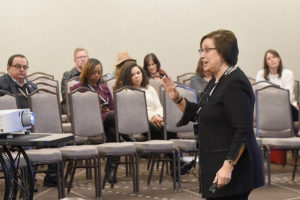
We would still be there every year to see old friends. The sharing took place in the hallways. There were some great discussions at breakfasts and lunches, but less so in the meeting rooms and on the dais.
About four years ago, I was contacted about a panel on music scheduling. The agenda committee person who contacted me knew I was famous for the topic. There were three others on the panel – programmers from Nashville, Wichita, and Savannah.
We had the typical conference calls about planning what we would talk about. I suggested that I lead with some real basics. I planned to cover categories, coding, tempo, sound, gender, core – non-core and the like. I’d provide screenshots from the software we used to schedule music. I’d explain how to properly schedule an hour of music and teach young folks how programmers keep the audience listening longer. That’s job one for a music scheduler. The cume (or head count) of the station is essentially a function of the format. Only a certain number of folks prefer country. However, we can make more money by getting those folks to spend 5, 10 or 15 minutes longer with the station.
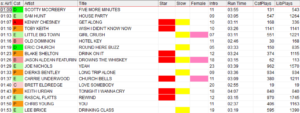
One metric you need to understand is our currency in radio. It’s the almighty “quarter hour.” One person who listens for an hour results in four quarter hours of credit, and four people who listen for 15 minutes each also results in four quarter hours credit to the station.
My point that day was to help teach, share and demystify what programmers in the know were doing to make folks listen longer.
You see I am older. I have accomplished some good things in my radio career. So when I think of CRS, I still think of growth through sharing. I like the concept of giving back to the young folks in the industry.
So on that dais that day during the Q&A, I was asked about percentage of coding and I answered. I said “don’t play females back to back” because they are a minority percentage of your music mix. I also said, “When you go back home to your station, check the percentage of females. If it’s over 15% take some out.”
Nothing happened.
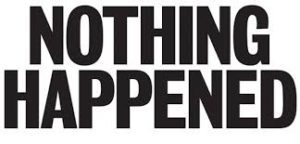
Folks inside the industry knew that what I was doing was helping young programmers. I was giving away something for free that you’d otherwise learn the hard way, or pay to learn from a researcher or consultant.
It wasn’t until a couple of months later that Lon Helton and Russ Penuell interviewed me about those same topics that all hell broke loose. Russ called me and we went over what I covered at CRS. Russ, Lon and I all shared the same vision, to help the young folks in our industry. I can still hear Lon saying, “What do say we dust off that music scheduling stuff for the kids from Dover, Delaware and Citrus, Florida who didn’t make it to CRS?”
My answer … “Sure!”

When Lon published “Country Air Check” to the worldwide web that night, it all started. I had a Twitter account I never used. That night, I got my first tweet from a Martina McBride fan named Jan in New York. In a word: “Douchebag”.
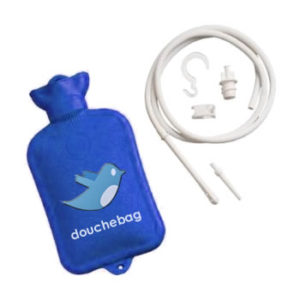
As it escalated from there, I found myself on radio shows, television shows, and in hundreds of newspapers and web sites. Tomato-Gate became a top trending Twitter topic and Facebook was on fire with pieces of salad being tossed and thrown in every direction. I answered every email, call, post and tweet that I could.
At first, I simply wanted to communicate an understanding of the issue. You see, I had tested that simple 15% metric and knew it to be truth.
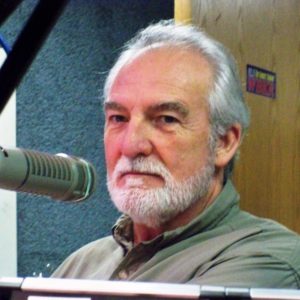
In the early 90s, I had been hired by Moon Mullins in Nashville to be an associate consultant for his company. We were famous for putting on new country radio stations and winning high ratings. However, by the late 90s, the ratings were slipping for the format. The trade press then was full of articles saying “Hot Country” had cooled off. Moon said to me once, “Oh well, perhaps the music isn’t as good right now.” I argued with him, because our research scores on songs were the same as they had been seven or eight years earlier. He simply said, “Well, it has to be something. Figure it out young man.”
I went back to my office and worked. I created an analysis of every measurable metric I could think of: percentage of current music, recurrent music, gold titles, library size, turnover times, coding compositions, twang, pop, mainstream, songs about God, songs about pickup trucks, groups, number of top 10 songs by the artists, length of the songs. I even analyzed the stations by years the same morning show had been in place, transmitter power, antenna height, money invested in marketing and the size and scope of prizes given away.
In all, one metric had changed. In the early “halcyon” days of country, we played 15% females – principally, Reba, Wynonna, and Trisha Yearwood. However, by the late 90s, the percentage was much higher. I saw stations that played 19%, even up to 27% females, like Shania Twain, Martina McBride, Faith Hill, Jo Dee Messina, The Dixie Chicks, Lee Ann Womack, Terri Clark, LeAnn Rimes, Deana Carter, Mindy McCready, Chely Wright, SheDaisy and so on. To compound the issue, it wasn’t just one or two titles by each. There were nearly a dozen Shania Twain titles, ten by the Dixie Chicks, seven, eight or nine by Martina McBride. So as a percentage, it had grown considerably.
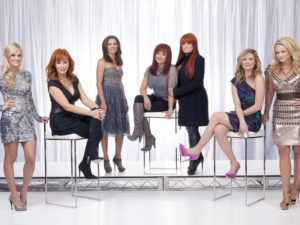
I won’t get into the deeper reasons why women who listen to country radio make the choices they do. I’ll just say that more women listen to country radio than men, and they listen longer. So, the programmers on country radio stations must study the listening habits of women. In fact, the greatest single bias in country music radio is tuning our product to women so they will listen longer.
Welcome to America. It’s a meritocracy. It’s a free market.

We do not play more men or less women because we have any biases towards them. We play more men and less women because of the behavioral bias of women radio listeners.
How can I be so sure about this?
I went to Moon Mullins and told him what I had found. He told me to take some of our clients and make ‘em guinea pigs. Probably not something I should share.
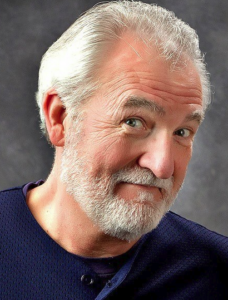
I took four stations and cut the number of females by removing the weaker testing titles. Instead of eight Shania Twain songs, I cut it to the four best testing. Instead of three Terri Clark titles, I cut it to the two best testing. Instead of seven Faith Hill titles, I cut it to the five best testing. By using this research stratification, I tuned the databases to meet the 15% metric used in the early 90s.
A few months later we had our answer. The four best Arbitron ratings performances we had were from these four stations.

So today in the news, I see that Bobby Bones will have a specialty show that plays only female country acts. The Tennessean has an article about it as well. They have dusted off Tomato-Gate only to find that not much has changed. In fact, the percentage of females on the country charts is actually down a tiny bit.
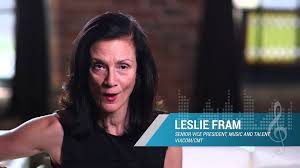
I hate to tell you that the attention brought to the subject has gotten more folks to realize the truth of the metric.
I never meant harm to anyone. Some see my comments as having helped the conversation. If it has done some good, I am happy about that.
The truth is, inside the radio and record industry we know what works and what doesn’t.
It’s a “sausage making metric” that folks outside of radio didn’t even know about.
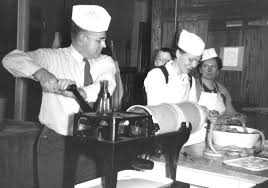
Just because a “know not” world reads something less than 50%, they think there is misogyny embedded.
It is not.
It’s simply a metric driven by the response of the audience. Much like the amount of flavors kept on hand by a Baskin Robbins ice cream store. They stock the most of what they sell the most. They stock less of what there is less demand for.
Now go enjoy your salad. The amount of tomatoes or any element is up to you.

If you want the highest ratings, call me and we will implement some Gordon Gekko-esque things that we won’t bother to explain to those who wouldn’t understand anyway.
Keith Hill 252-453-8888

